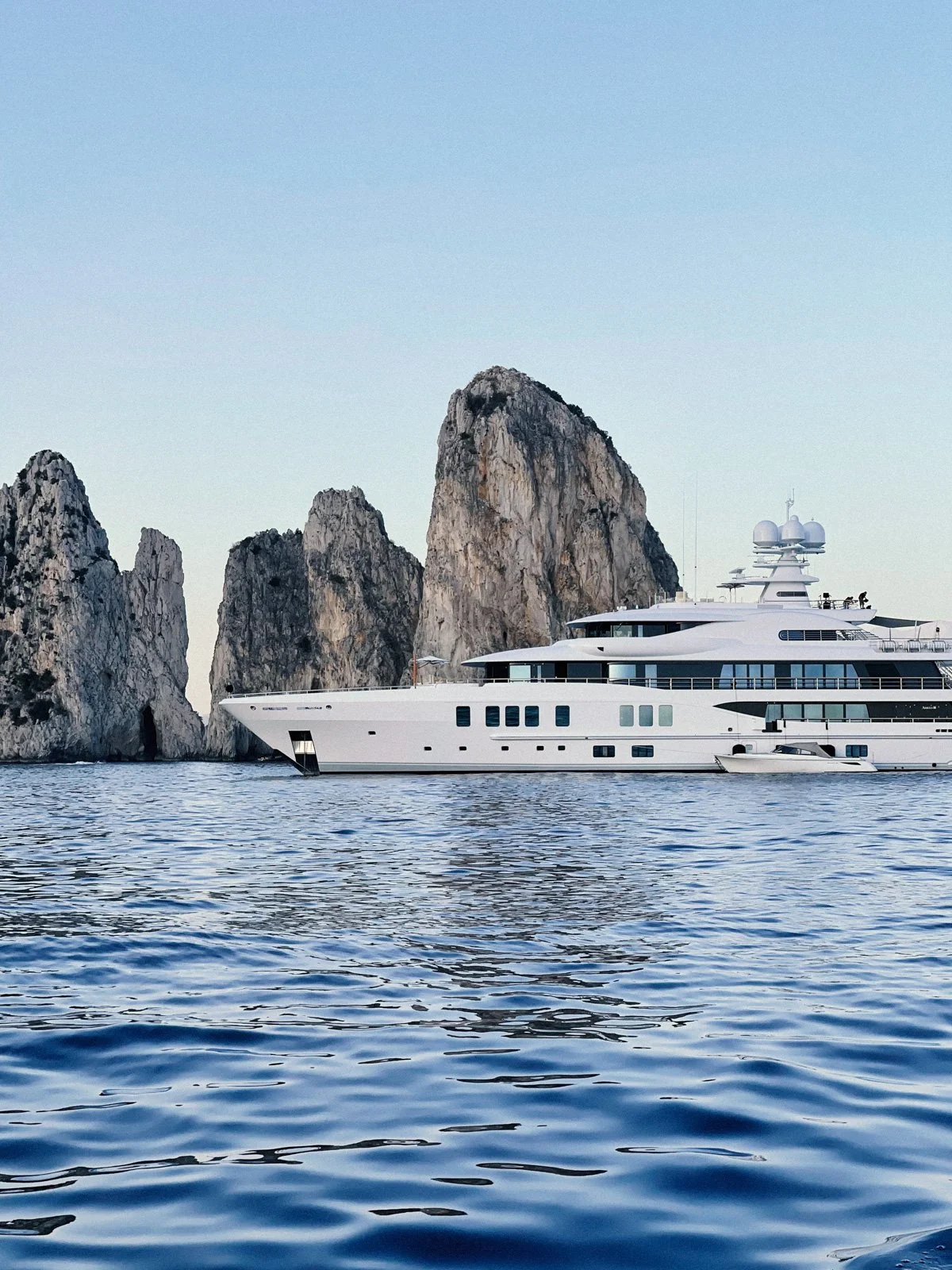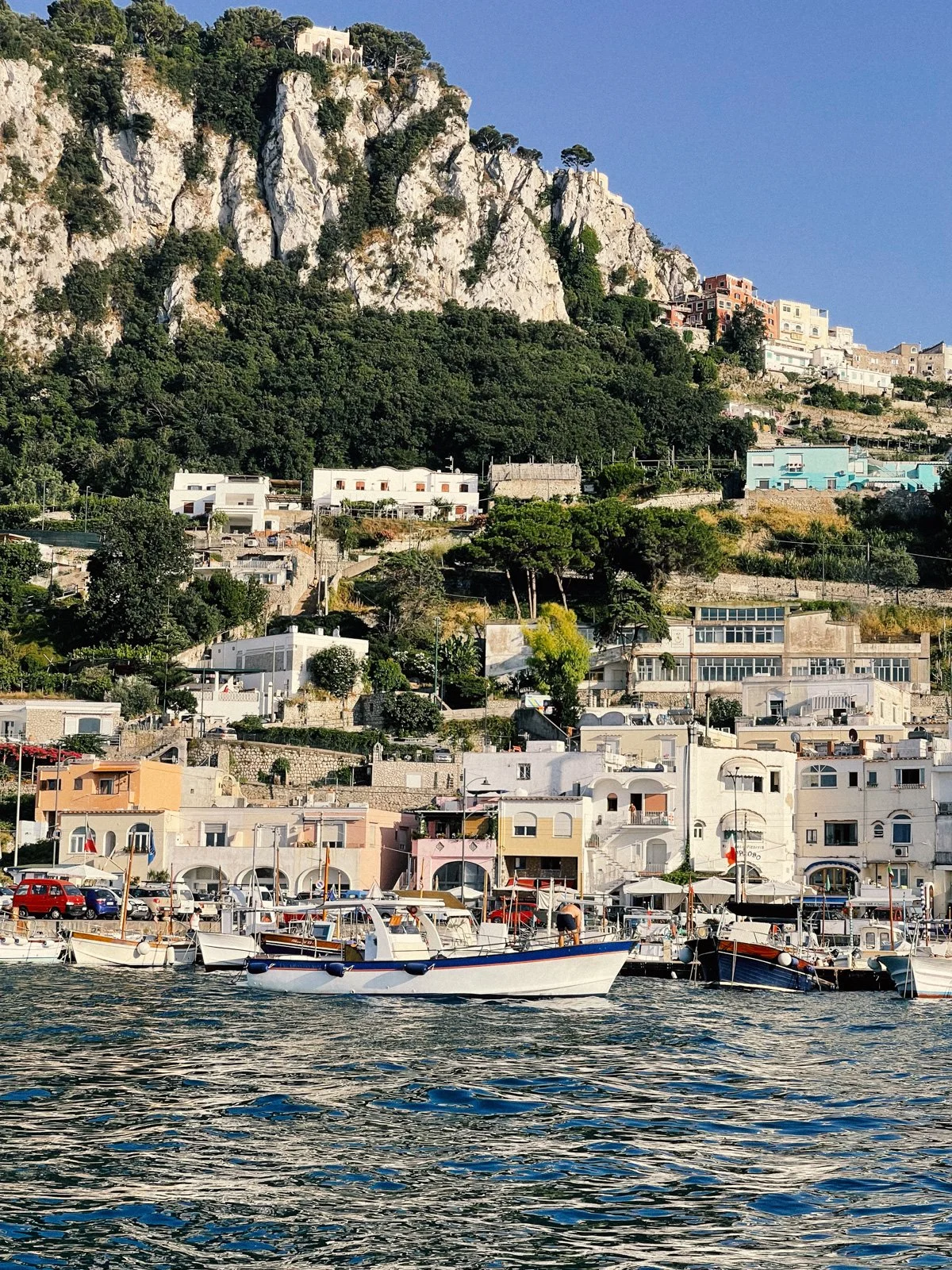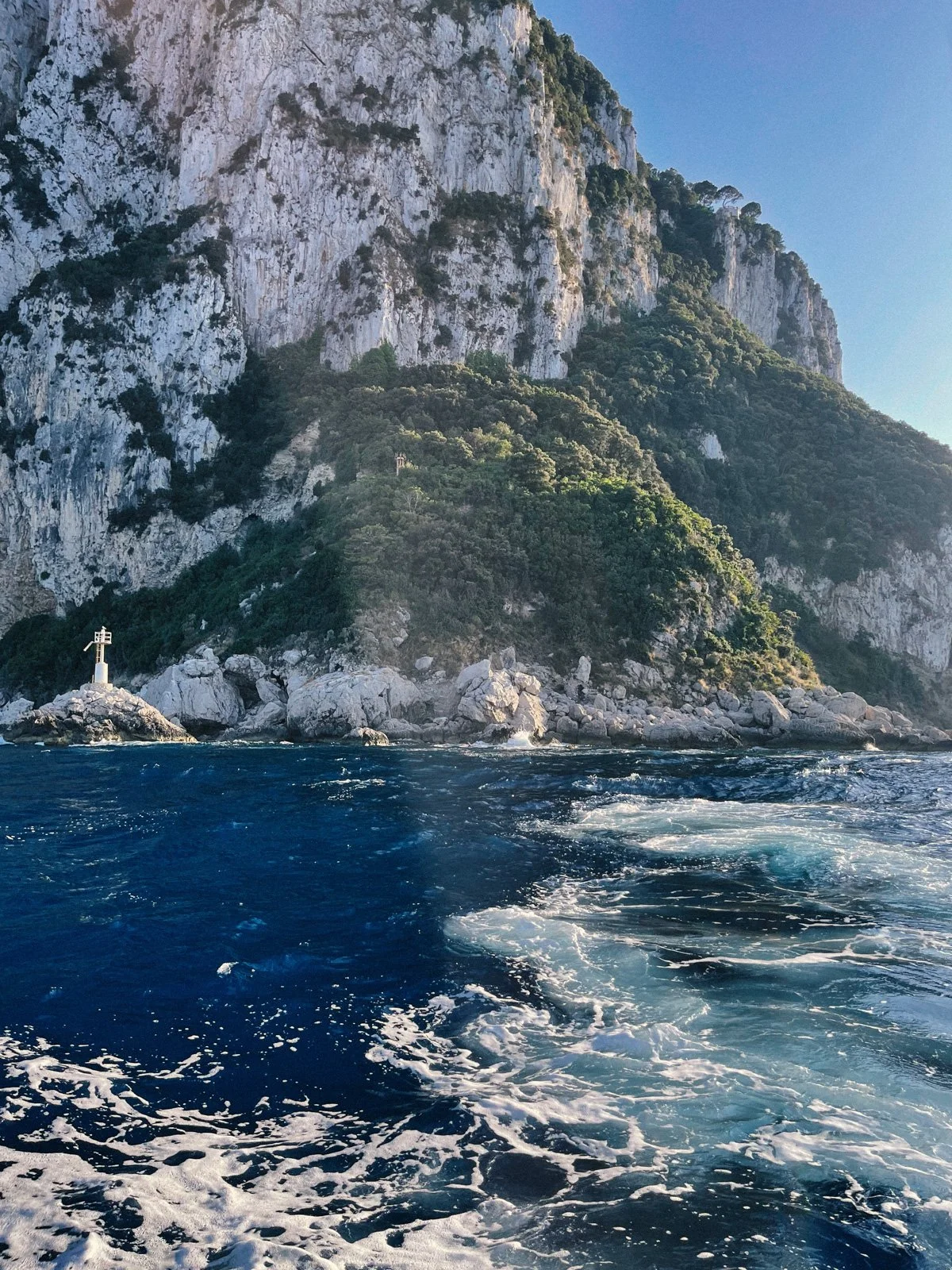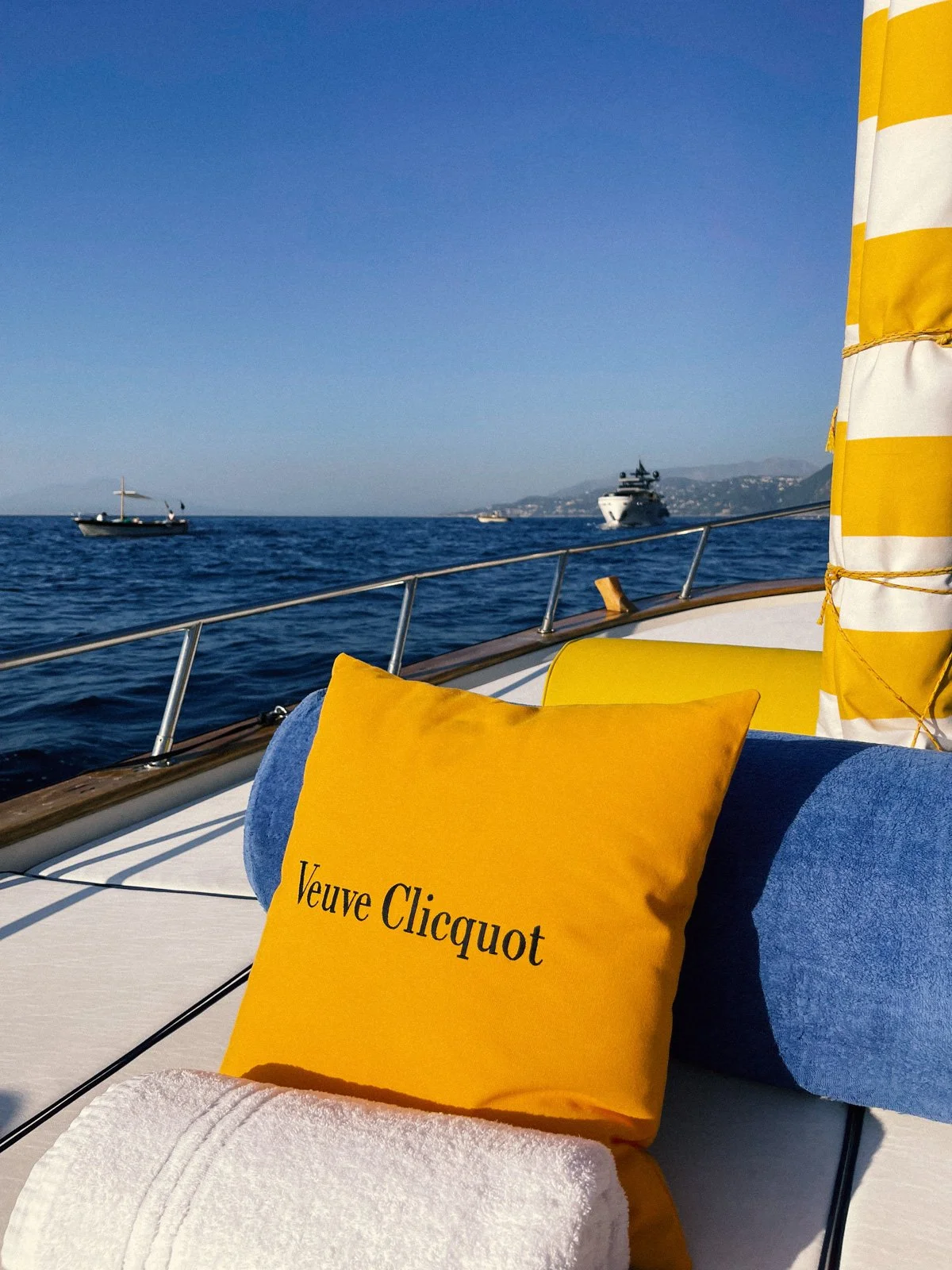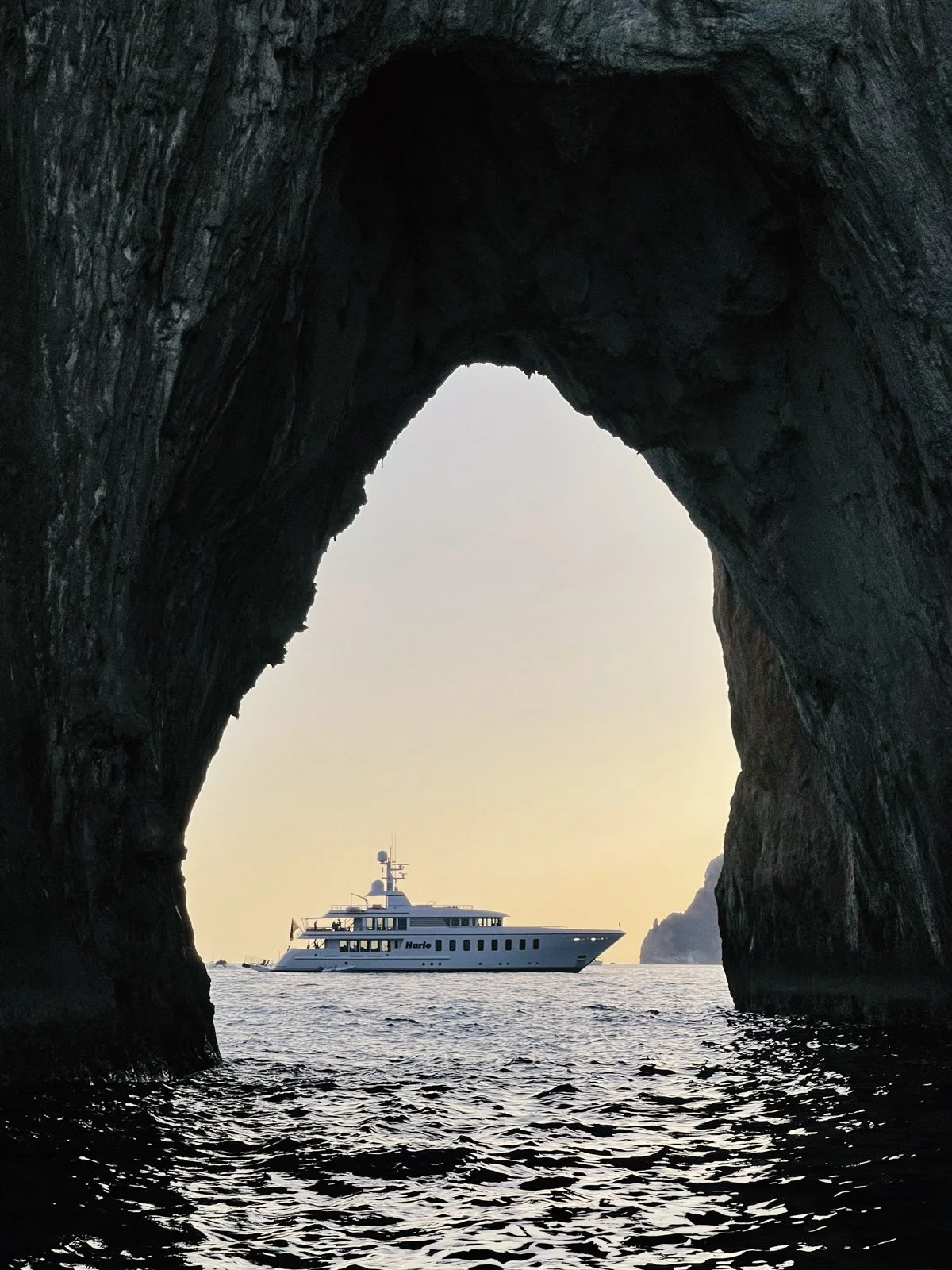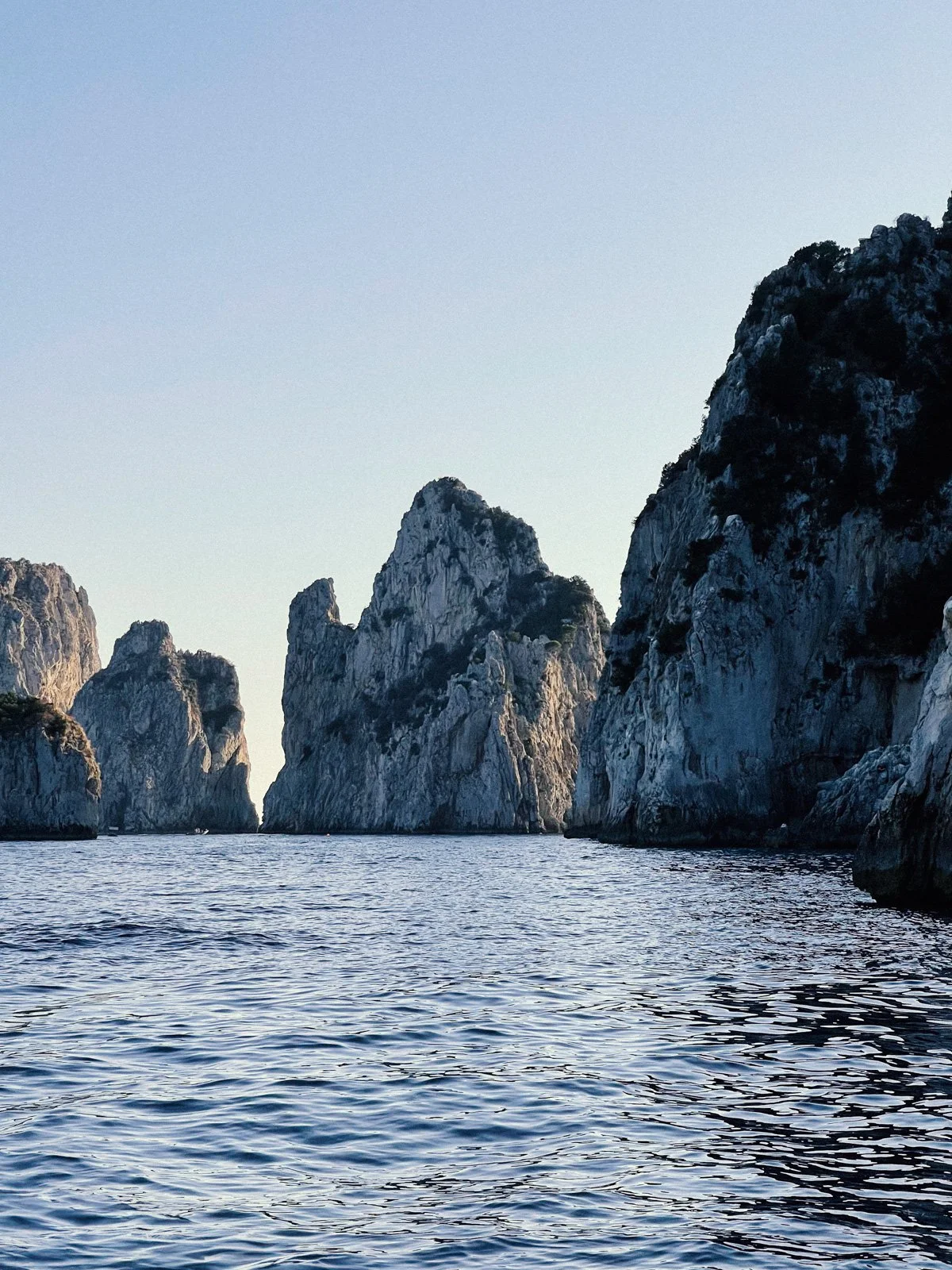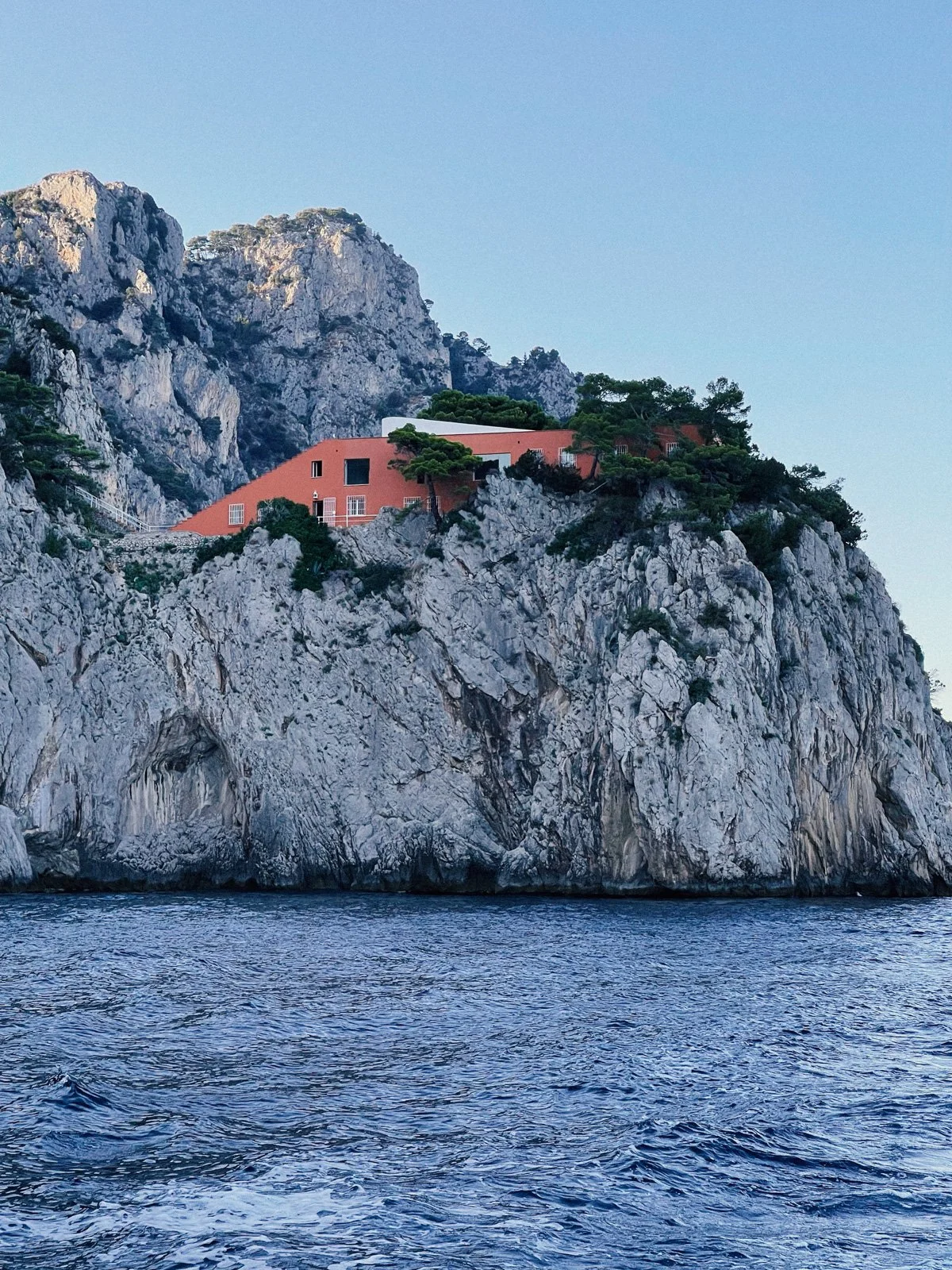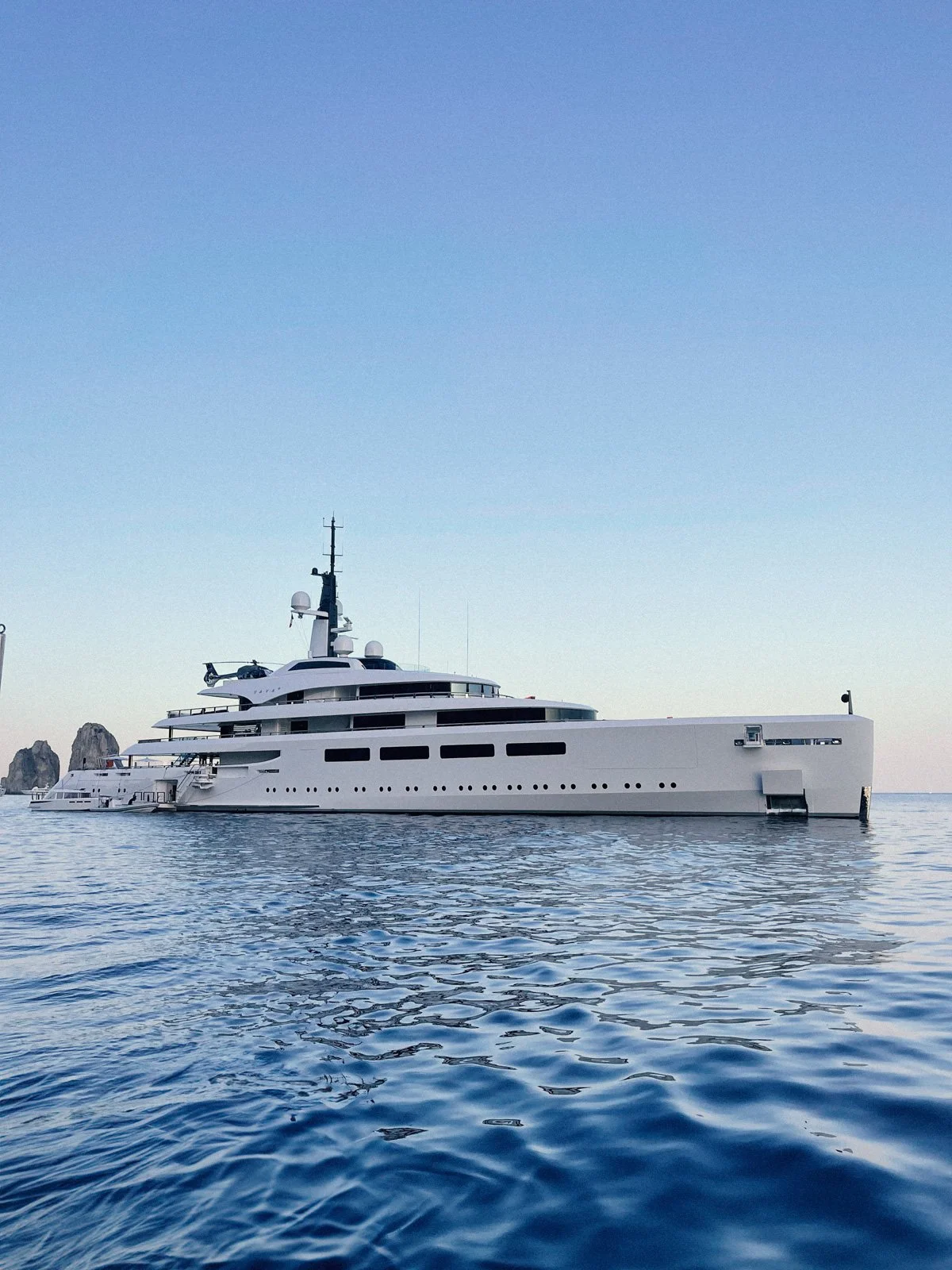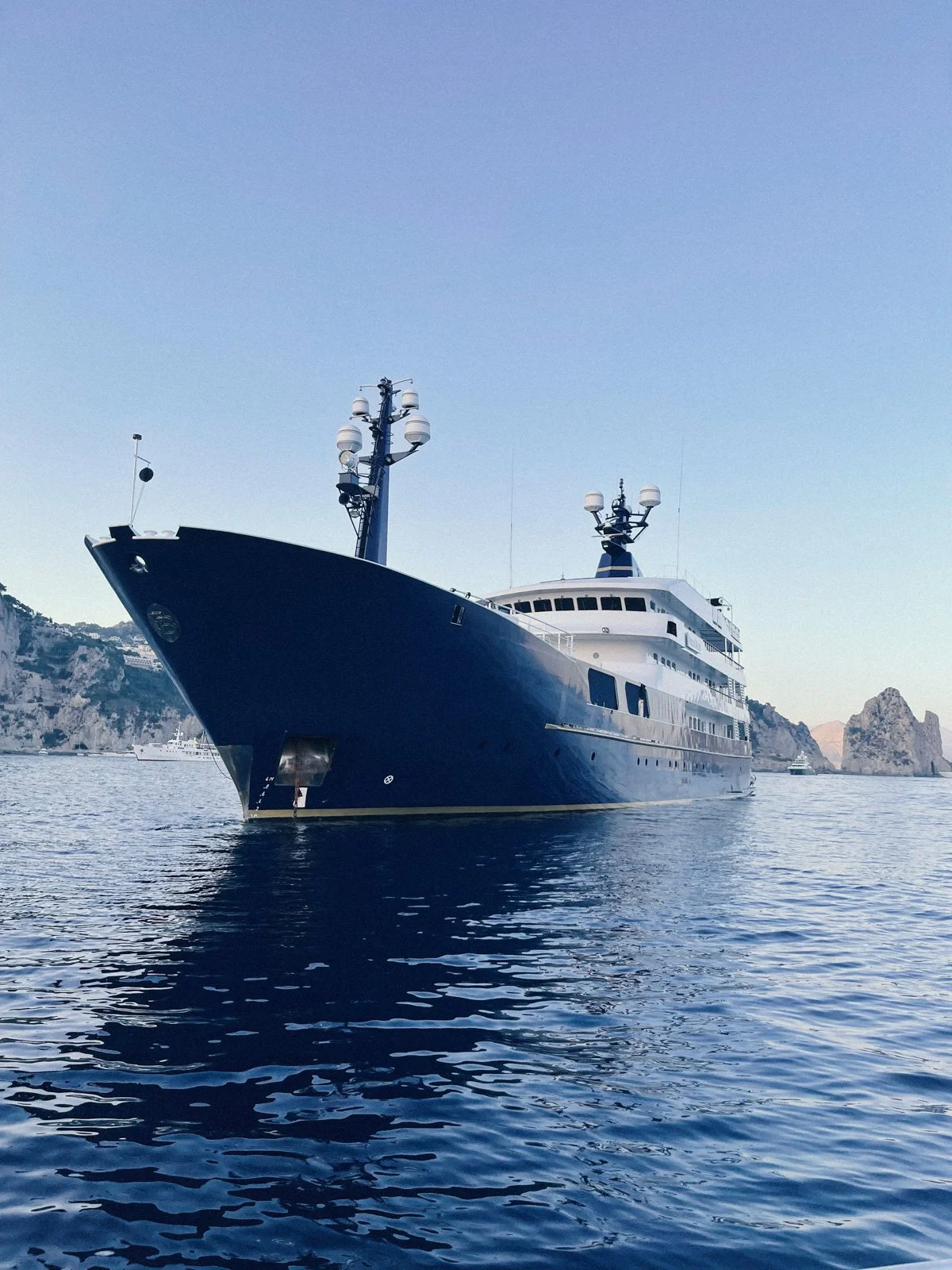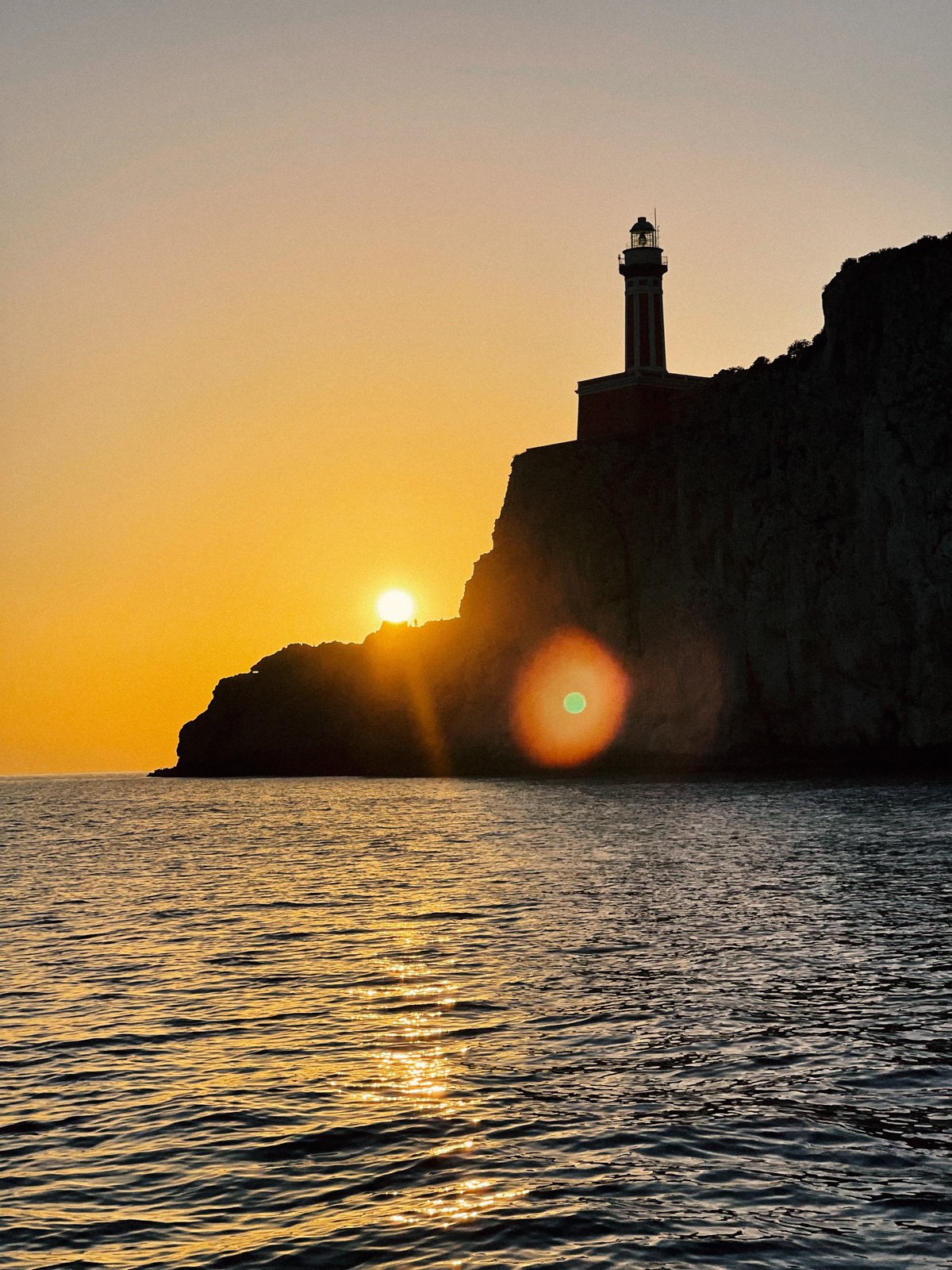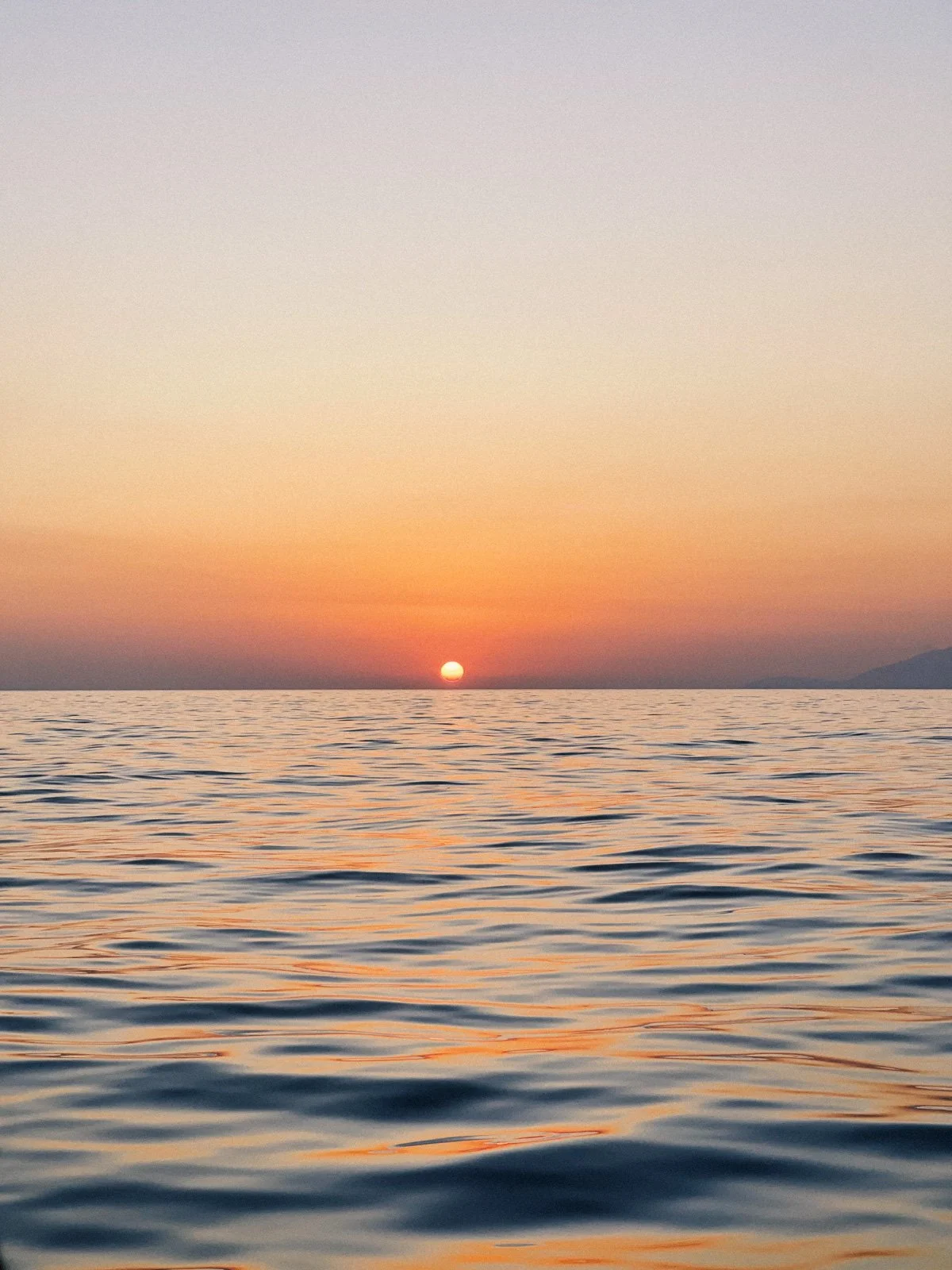Champagne Horizons: Veuve Clicquot Moments Among Capri’s Super Yachts
Golden Bubbles, Moving Hulls
There are many ways to see Capri, but only one that feels like it belongs to the island itself: slowly, from the water, with the horizon as your tablecloth and the passing Capri super yachts as the moving décor.
Three elements define this experience. First, the Veuve Clicquot in your hand — a gold that catches the same light gilding the cliffs. Second, Casa Malaparte — the terracotta apparition that crowns the headland. Third, the super yachts themselves — silent, transient, gliding through your frame like actors who know the value of an exit.
The Ritual of Departure
Marina Grande is a study in contrasts.
Onshore: the churn of the day’s commerce — fishermen unloading their morning catch, porters in pressed polos moving luggage for the day’s arrivals, ferry horns splitting the air. Offshore: a quiet line of gozzi — Capri’s wide-beamed wooden boats — waiting in the shade, hulls kissed by the tide.
Your skipper is waiting beside one of these. The deck is clean, cushions are plump, and the bimini throws a stripe of shade across the bow. But your eyes go to the ice bucket — silver, beaded with condensation, cradling the saffron-yellow label that needs no introduction. The cork is eased, not burst. Foam licks the lip of the bottle before settling. The first pour catches the light, and already the day has changed temperature.
First Sips, First Sights
As the boat slides from the harbour, the sounds of land fall away. The engine hum is steady, almost meditative, as the coastline unfurls.
Gold in the Glass, Blue in the Eye
The sea here is a lesson in gradients: pale turquoise near the shallows, deepening to cobalt within metres. Your Veuve Clicquot mirrors it in reverse — amber at the base, lightening to lemon at the meniscus. You take a slow sip, tasting the chalky bite under the fruit, the tiny bubbles that feel like punctuation.
The First Capri Super Yacht
It appears without fanfare — a hull in polished navy, anchored just far enough offshore to suggest privacy. The decks are empty; perhaps its guests are breakfasting onshore, or still sleeping under air-conditioned skylights. A tender swings lazily from davits. Then the coast curves and it’s gone, replaced by a silvered monolith in the distance.
The Theatre of Capri Super Yachts
The waters around Capri are a stage, and the super yachts are both scenery and spectacle.
Some are old-world classics — teak decks, curved lines, gleaming brass. Others are modern stealth forms: angular, metallic, built as much for the helipad as the hull. Their flags tell stories: Cayman registry, Monegasque pennants, the occasional tricolore.
Watching Without Wanting
From the comfort of the gozzo, you are close enough to see the teak seams and chrome fittings, but far enough to feel untouched by their gravity. They drift, they reposition, they leave. The only constant is their transience.
The Dance of the Tenders
Small craft zip between ship and shore — shuttling guests to La Fontelina, delivering crates of chilled rosé, returning with bags from Via Camerelle boutiques. The choreography repeats, endlessly varied, endlessly the same.
Mid-Journey – Between Champagne and Cliff
The coastline shifts to vertical drama. Limestone walls rise sheer from the sea, their ledges tufted with scrub and pine. You pass the Faraglioni, those stone sentinels every Capri postcard knows, and slip into quieter coves where the water turns glass-clear.
Another Pour, Another Frame
The second flute is cooler than expected; the breeze has kept the bottle crisp in its bucket. You drink with your eyes as much as your mouth — watching another Capri super yacht idle near a grotto, its passengers diving from the swim platform into the green shadow.
Casa Malaparte – The Still Point
And then — Casa Malaparte.
It doesn’t so much appear as reveal itself, emerging from the headland like an object placed by some deliberate, unseen hand.
A flat-roofed block of terracotta, its straight staircase climbing to a rooftop terrace open to sky and sea. Designed in the 1930s, famously used in Le Mépris, it remains inaccessible by road. From the water, it looks both impregnable and vulnerable — a fragment of geometry suspended over infinity.
Silence and Symmetry
The skipper cuts the engine. The boat drifts in the current. Your champagne glass is refilled — the liquid gold and the house’s ochre holding the same note under different light. There’s no chatter, no clink of cutlery from a nearby table. Just the gentle knock of hull on swell, and the sense that this view is for you alone.
Super Yachts in Passing
Beyond the headland, a new fleet comes into view.
One glides past in absolute silence, its wake fanning out like silk. Another is already at anchor, crew in whites setting up a shaded dining table on the aft deck. These Capri super yachts are always in motion — even when they appear still — and each encounter is a brief intersection before courses diverge.
The Return — Shadows Lengthen
The light begins to shift, edges softening. The cliffs are now honeyed, the sea darker, the champagne down to its last inch in the bottle.
The Last Sip
It’s warmer now, the bubbles slower, but the taste has broadened — richer, rounder. You take it in small mouthfuls, pairing it with the final views of Capri super yachts silhouetted against the sinking sun.
Back to the Harbour
Marina Grande reappears, its pastels unchanged. You step ashore carrying more than you boarded with: not bags, but a triptych of moments — golden glass, terracotta staircase, silver hull.
